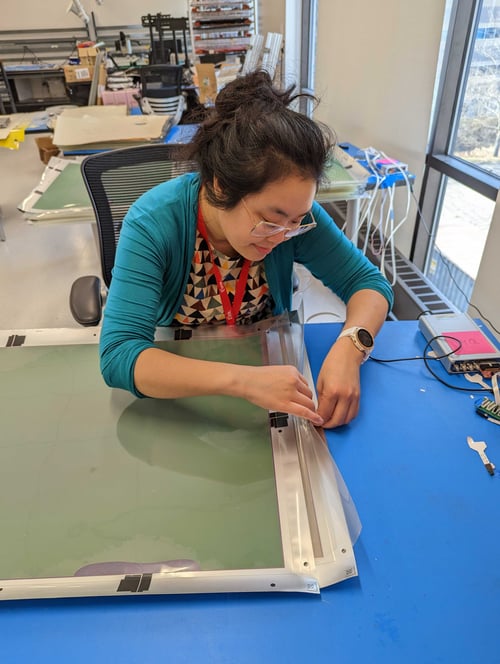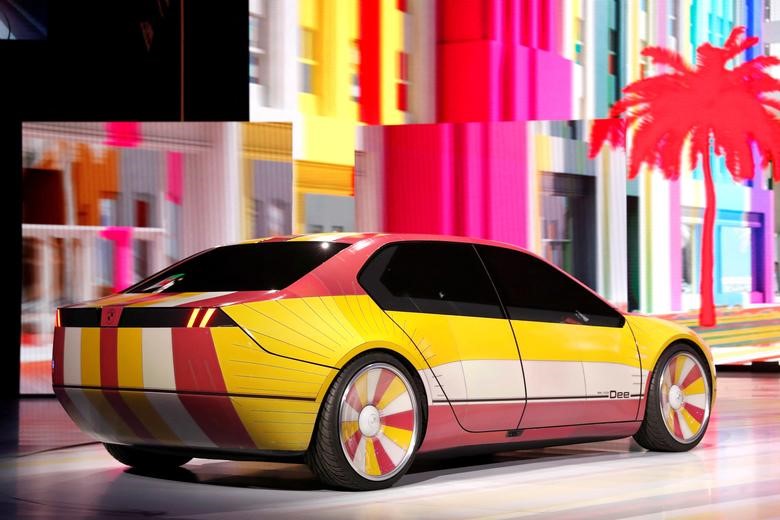What’s Driving E Ink’s Color Change? Algorithms!
What’s an algorithm? Well, it depends on whom you ask.
The general public largely thinks of algorithms as the software behind search engines and social media that determines the type of content we see. But if you ask that question to an Inker, they might give you a completely different answer. In fact, algorithms help drive the color change in E Ink panels.
In this week’s “Ask an Inker” blog, Crystal Nguyen, research engineer at E Ink dives into this topic with us.
Before we get into it, Crystal, tell us about your background. How did you land at E Ink?
Crystal: I studied electrical and mechanical engineering in college. It’s a very broad major you can go into anything, and for a while, it was hard to pick a direction, I had a lot of internships ranging from medical devices, manufacturing, and clinical engineering. The turning point was when Amazon launched the first Kindle in 2007. That got me hooked on E Ink. When I saw their job openings, I applied, and I’ve been here ever since. It’s been almost 14 years.

Crystal working on color applications in the E Ink labatory
Credit: E Ink
What elements of your career encouraged you to stay at E Ink for more than a decade?
Continuous learning is something I truly value, and I look for companies that offer that kind of opportunity. I am also not a fan of routine work – different and challenging projects excite me. E Ink is the perfect employer from this perspective.
When I first started, I was in our Ink Device Physics group and helped create production processes to generate black and white switching algorithms. From this, I learned how to switch our black and white displays and then became more interested in the electronics and integration. With this interest in integration, I contributed to our diversifications efforts where I created processes to manage large and small displays. After developing these processes, I moved to our Advance Display Systems group in research where I focused on new applications and technologies to integrate E Ink research material.
With all of this work, I worked closely with our customers/FAE teams, to understanding pain points and requirements, and defining product specifications. Now, as a research engineer, I have the opportunity to work on many exciting projects as well – BMW was one of them.
Let’s talk about algorithms. What an interesting topic! How does that make E Ink panels change color?
Switching algorithms is a set of instructions in the form of voltage sequences that enables us to get to a certain color. There is a lot of testing involved to create these voltage sequence, with this testing it helps us characterizes our materials and we have algorithms to generate initial voltage sequences and we modify the sequences from there.
Switching colors was one of the main challenges of the BMW concept car at this year’s CES, compared to black and white, the voltage sequence is more sophisticated. We were using a lot more voltages in the sequence, and have found that the voltage distribution across a material can vary depending on a variety of variables, so we’d had to select the best switching algorithm that worked on both small parts and large parts. We also ran into some uniformity challenges and defects. I ended up developing screening tests that allowed us to identify faulty parts and optimize panel conditioning.

The BMW i Vision Dee concept car showcased at CES 2023, powered by E Ink technology.
Credit: Reuters
Looking forward, what are you most excited about the future of E Ink?
E Ink’s low power displays are super competitive in the market, and the company really is walking the walk and putting sustainability at the forefront of its business operations. Looking forward, I’d love to see more signage applications powered by E Ink in transportation and healthcare.

Massachusetts Bay Transportation Authority (MBTA) Transportation Signage.
Credit: E Ink
Take transportation, for example. E Ink signage can be easily installed, and it’s rugged so it withstands challenging environments. With consumers expecting real-time updates on schedules and routes, signage displays powered by E Ink check off a lot of boxes and allow companies to stay connected with their passengers.
I’m excited to see which industries our customers will take E Ink to in the future!


Leave Comment